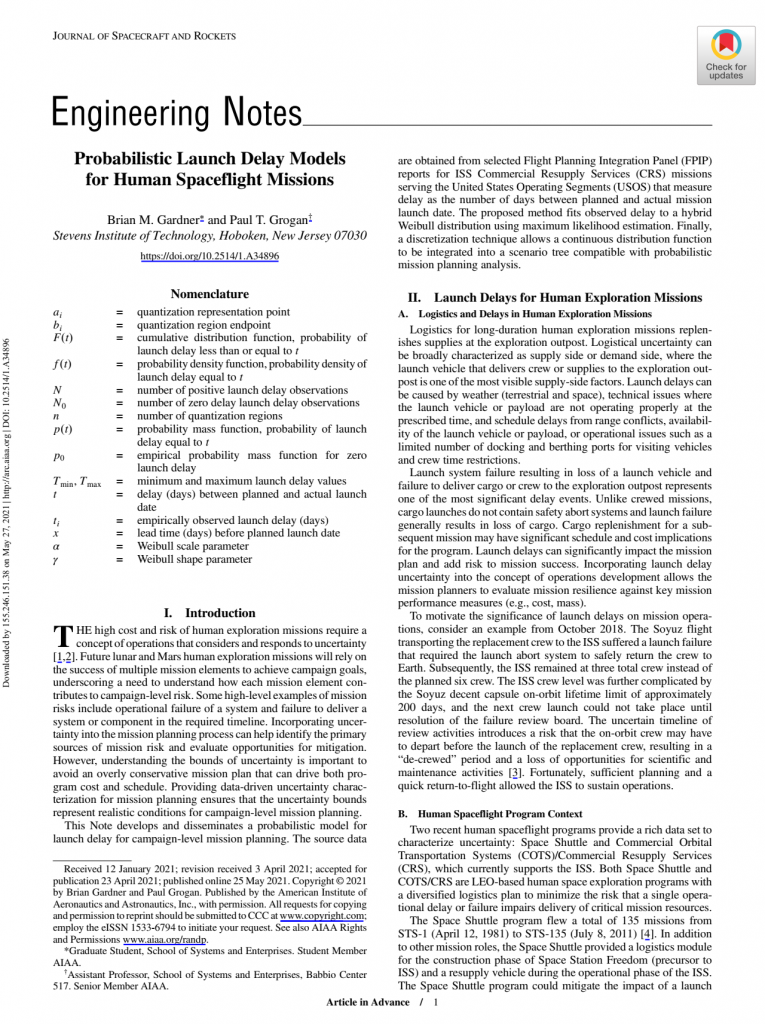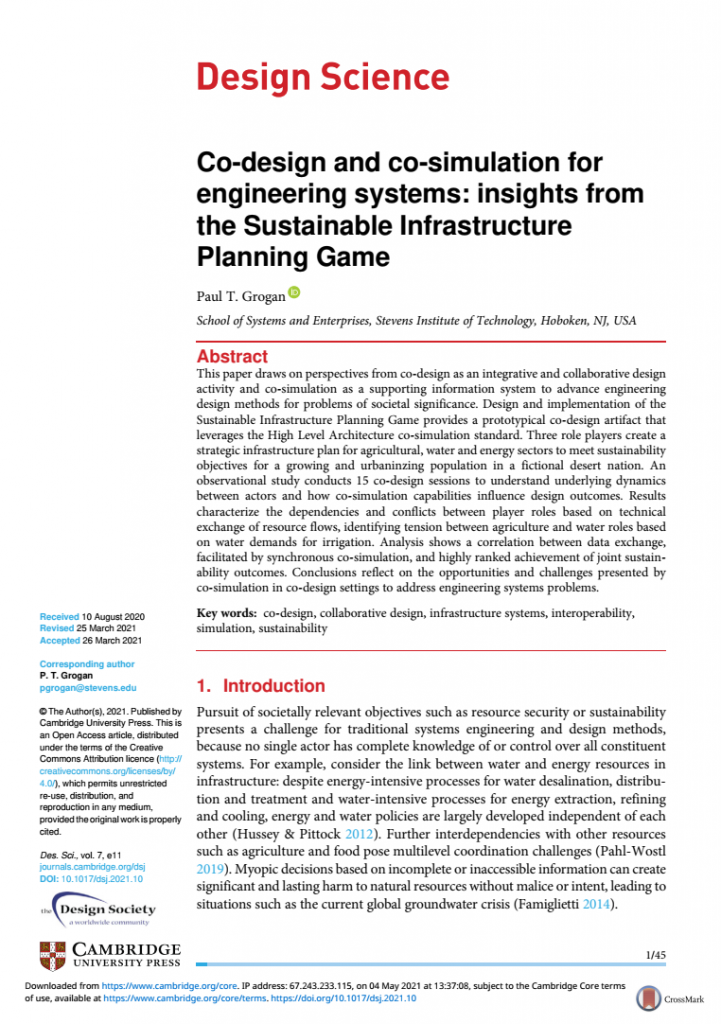A new engineering note co-authored by Brian Gardner and Paul Grogan appears in Journal of Spacecraft and Rockets as an “article in advance” manuscript.
Probabilistic Launch Delay Models for Human Spaceflight Missions
Human exploration logistics rely on a launch vehicle to place supplies in orbit. Estimating launch vehicle delay helps mission planning ensure adequate supplies under uncertainty in replenishment schedule. This paper mines launch delay data for human exploration missions from the International Space Station (ISS) US operating segment (USOS) including NASA commercial cargo (Northrop Grumman and SpaceX), ESA and JAXA missions from March 2013 to February 2017 as a mix of established mission providers (ESA and JAXA) and commercial companies spanning launch vehicle system development and recurring cargo delivery missions. Continuous probability distributions are developed using maximum likelihood estimates for launch delays associated with near-term, intermediate and long-term mission planning dates. Additionally, an approach adapted from the signal processing domain to convert the continuous distribution into a discrete probability mass function is outlined for scenario tree analysis.


